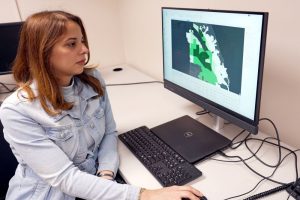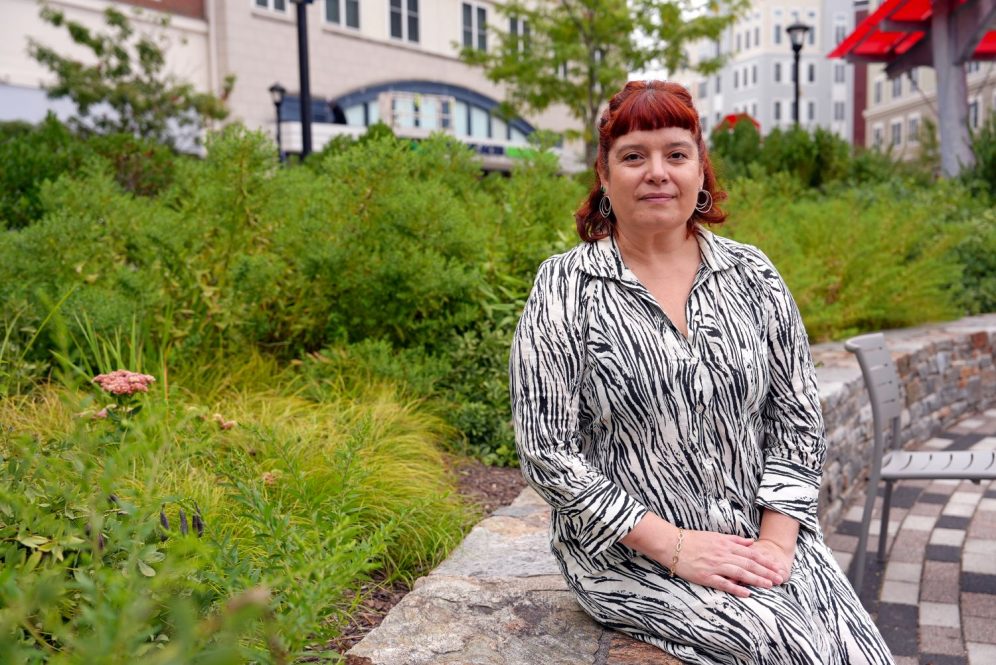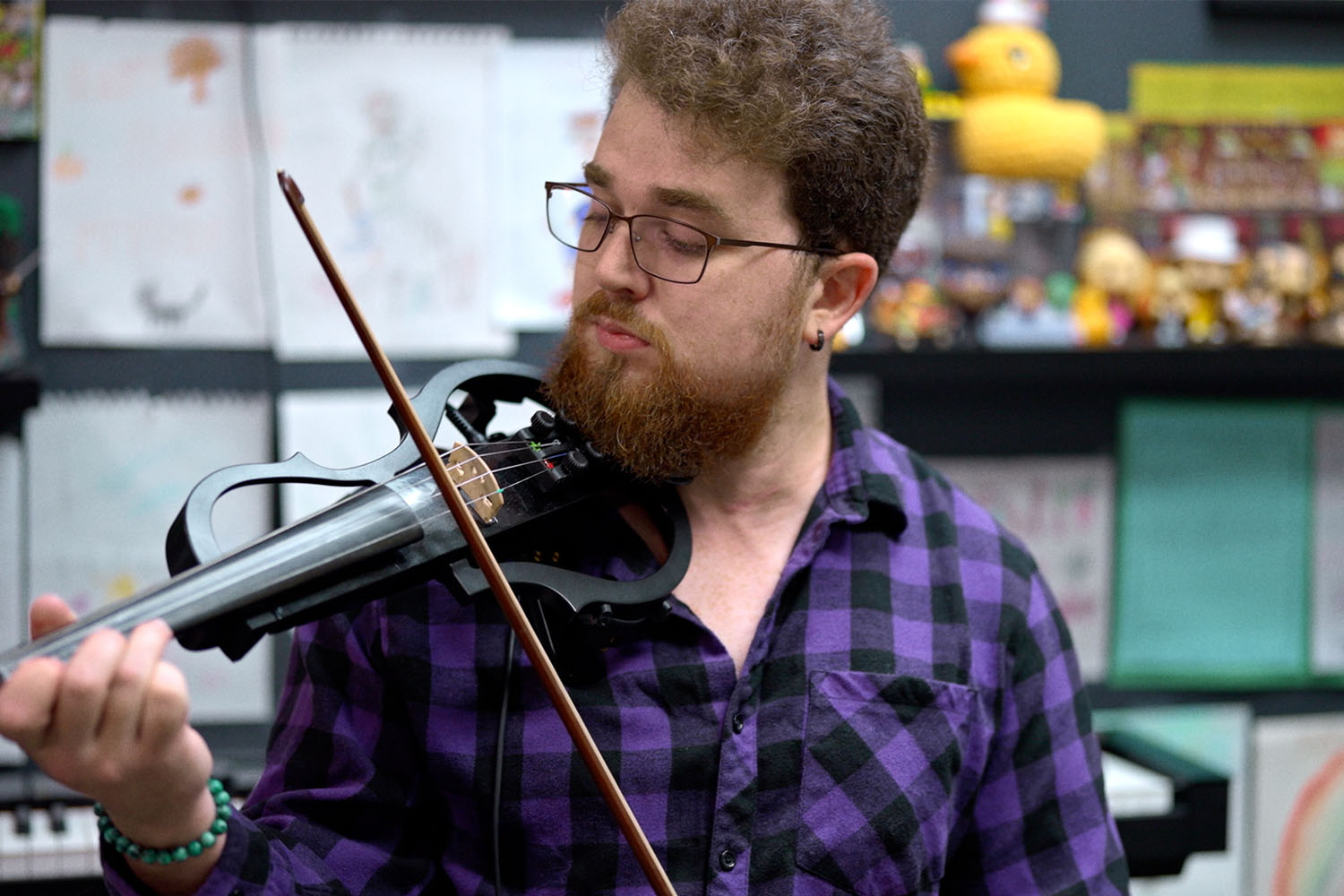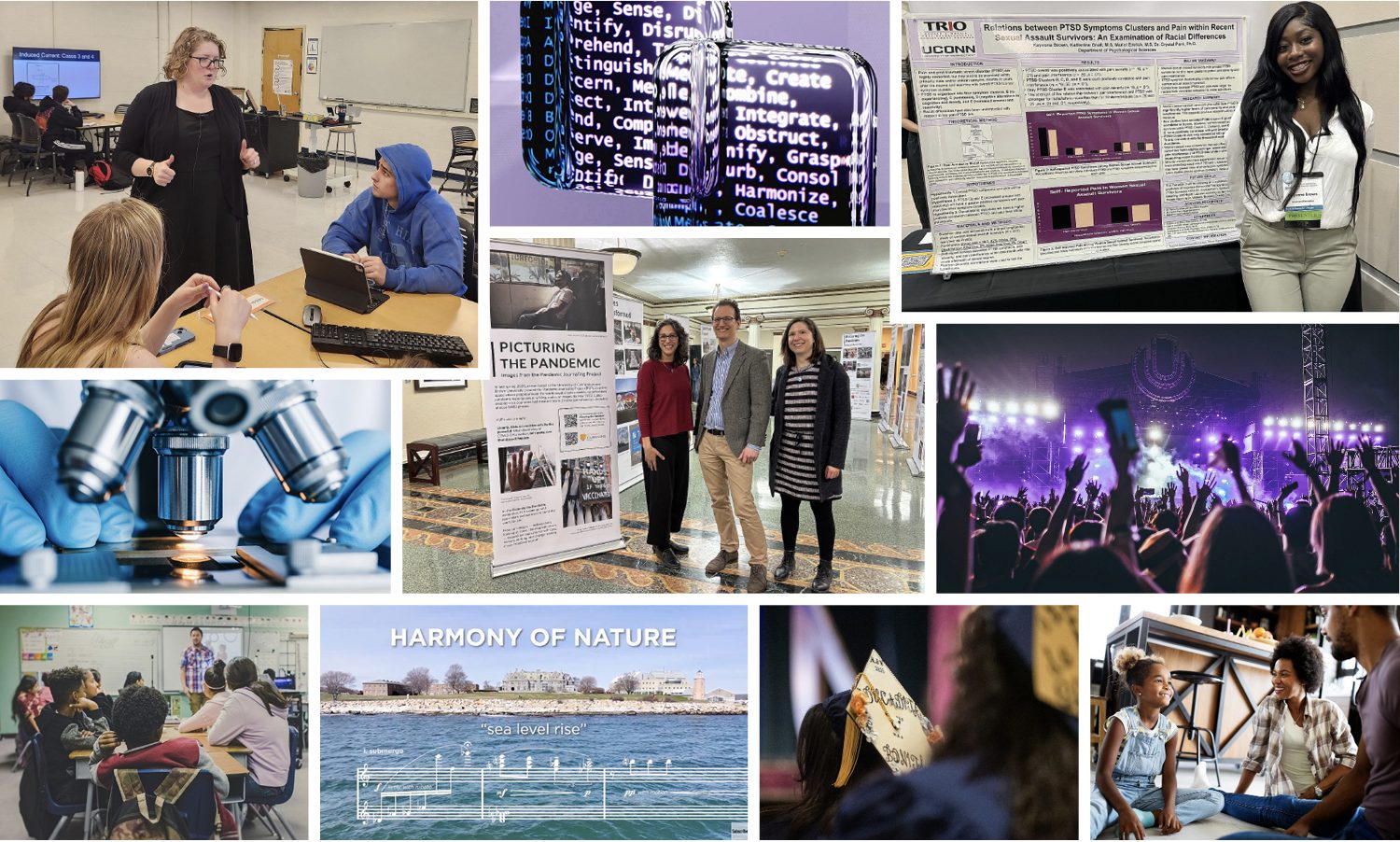Through its research, extension, and educational activities, the College of Agriculture, Health and Natural Resources (CAHNR) has established itself as a leader in urban forestry in the state.
The work of Cynnamon Dobbs, assistant professor of natural resources and the environment, and Mayra Rodríguez González, assistant UConn Extension educator in urban and community forestry, focuses on urban forestry and environmental justice, specifically working with Connecticut’s Hispanic and Latino communities.
Rodríguez and Dobbs are leaders of the urban and community forestry research and extension initiative, a partnership between the University and state and community organizations.
Urban forestry focuses on making cities more resilient to strains on their natural resources due to climate change, air pollution, water pollution, and other many other environmental issues.
“Cities are not going anywhere,” Dobbs says. “We need to find ways to make cities more livable and more resilient in the future, and urban forestry is one of the strategies we need to do that.”
Trees provide a host of “ecosystem services,” which include all the commercial and non-commercial benefits they provide. For example, plants absorb carbon through photosynthesis. Respiration in vegetation releases carbon to the atmosphere. The tree canopy also reflects light and provides shade. This is especially important in urban areas where “heat islands” are more common because concreate absorbs sunlight and retains heat.
Vegetation can also benefit people’s physical and mental health. Rodríguez is working with a UConn Health summer student intern to create an asset map of Hartford neighborhoods to highlight the various ways people can benefit from their proximity to plant life.
“Urban forestry can provide solutions that go beyond just the environmental,” Rodríguez says.
“We need to understand how all of those things work together because urban resilience includes all of those things.”
A key component of Rodríguez and Dobbs’ work is empowering local communities to make their voices heard.
“It’s about getting people to realize that all of these players – from the decision-maker to the practitioner, the landowner, to a community member – are important and their perspectives matter when we are managing these spaces,” Rodríguez says.
Getting input from communities can make urban forestry initiatives more responsive to specific community needs.
For example, immigrants may feel a connection to certain trees from their home country. Planting those trees in the areas in their new neighborhoods can provide a sense of home and community.
“These emotional elements are important for us to highlight. It’s a way to improve the governance of natural resources in a very globalized world,” Dobbs says.
Much of the urban forestry work at CAHNR is having an impact at the state and local level.

Rodríguez is involved with the Hartford Tree Advisory Commission. She presents her research to the Commission and helps facilitate community stakeholder engagement. She is also working on the Capital Stewardship Initiative, a recent $6 million grant from the U.S. Department of Agriculture to the City of Hartford to plant trees in the city.
Part of Rodríguez’s efforts also include presentations to a family wellness center in Hartford through a partnership with the Hispanic Health Council on topics including how climate change impacts the community, food justice, and equitable tree distribution.
“The idea is to tackle different dimensions of health and that includes environmental health,” Rodríguez says.
Teaching younger members of the community is also a vital element, Rodríguez says. That’s why she delivers programming with the Hartford Public Library for children of all ages. For the youngest group, she teaches lessons about the “3 Rs” – reduce, reuse, recycle. Middle school participants perform hands-on data collection on air pollution, water quality, and heat islands. Rodríguez teaches the high school students about careers in conservation and how they can use emerging drone technology.
The urban and community forestry research and extension initiative also brought Latino Conservation Week – a Hispanic Access Foundation program – to the state. The event included free workshops and exhibits.
“That was very cool because it brought in people from natural resources and the environment, extension, community partners, and beyond,” Rodríguez says. They will hold this week-long series of events again this year from September 14 to September 22, 2024.
Dobbs, Rodríguez, and Robert Fahey, George F. Cloutier Professor in Forestry and director of the UConn Forest, are all members of the Connecticut Urban Forest Council. The Council’s mission to provide advice, assistance, education, information, and support to urban and community forestry professionals, associated professionals, municipal, state and corporate leaders, and volunteers.
This initiative relates to a grant Dobbs is leading that seeks to address barriers to accessing urban forestry programs. This work is funded by the Connecticut Department of Energy and Environmental Protection (DEEP). It will serve environmental justice communities in Hartford, New London, New Britain, Willimantic, Danbury, and Waterbury.
Environmental justice communities are defined by national standards as those that suffer from disproportionate impacts of environmental hazards like air pollution, flooding, heat islands, noise pollution, or water pollution in conjunction with socioeconomic factors.
These cities were chosen because they have not received urban forestry grants from DEEP in the past.
The researchers will work with community organizations to identify barriers they face to accessing DEEP funding.
The researchers will create neighborhood-specific information about ecosystem services, climate, tree diversity, and air and noise pollution.
“We will be able to get further by creating outreach material that is grounded within the community. It will be more impactful that general materials that are the norm,” Dobbs says.
The researchers will share this information with community organizations who can use them for their programming.
An overarching goal of this work is to encourage people to think about their environments differently, understanding the myriad services trees provide beyond traditional forestry.
“I think trees, vegetation, and nature still have a lot to say in cities, and that’s why we’re working on this,” Dobbs says.
This work relates to CAHNR’s Strategic Vision area focused on Promoting Diversity, Equity, Inclusion, and Justice and Advancing Adaptation and Resilience in a Changing Climate.
Follow UConn CAHNR on social media



